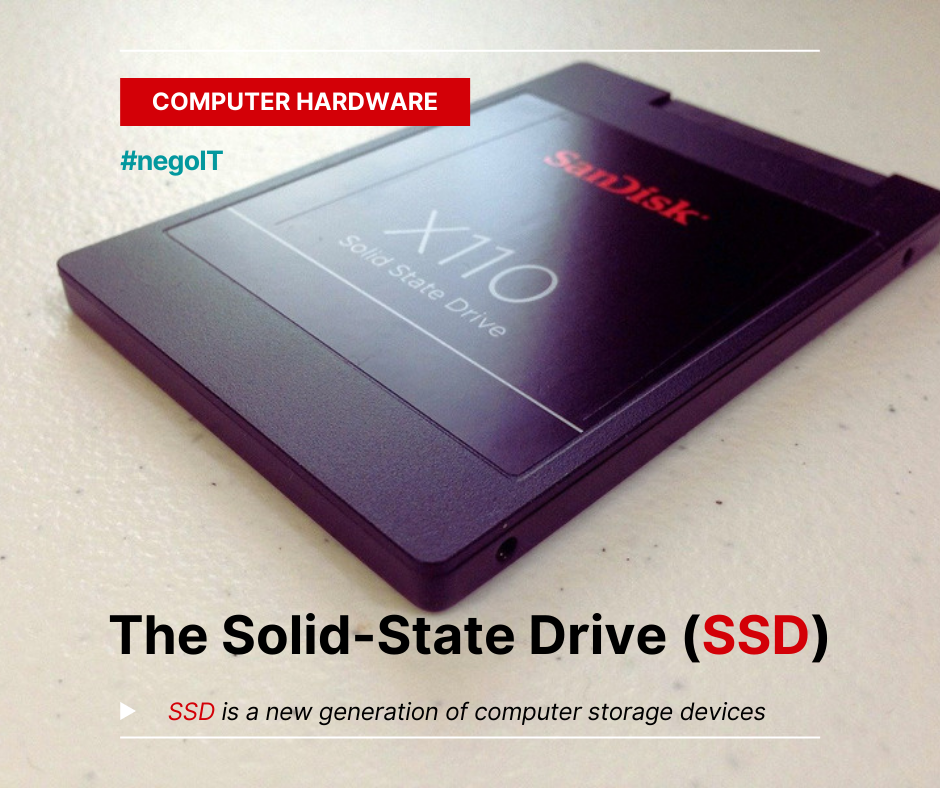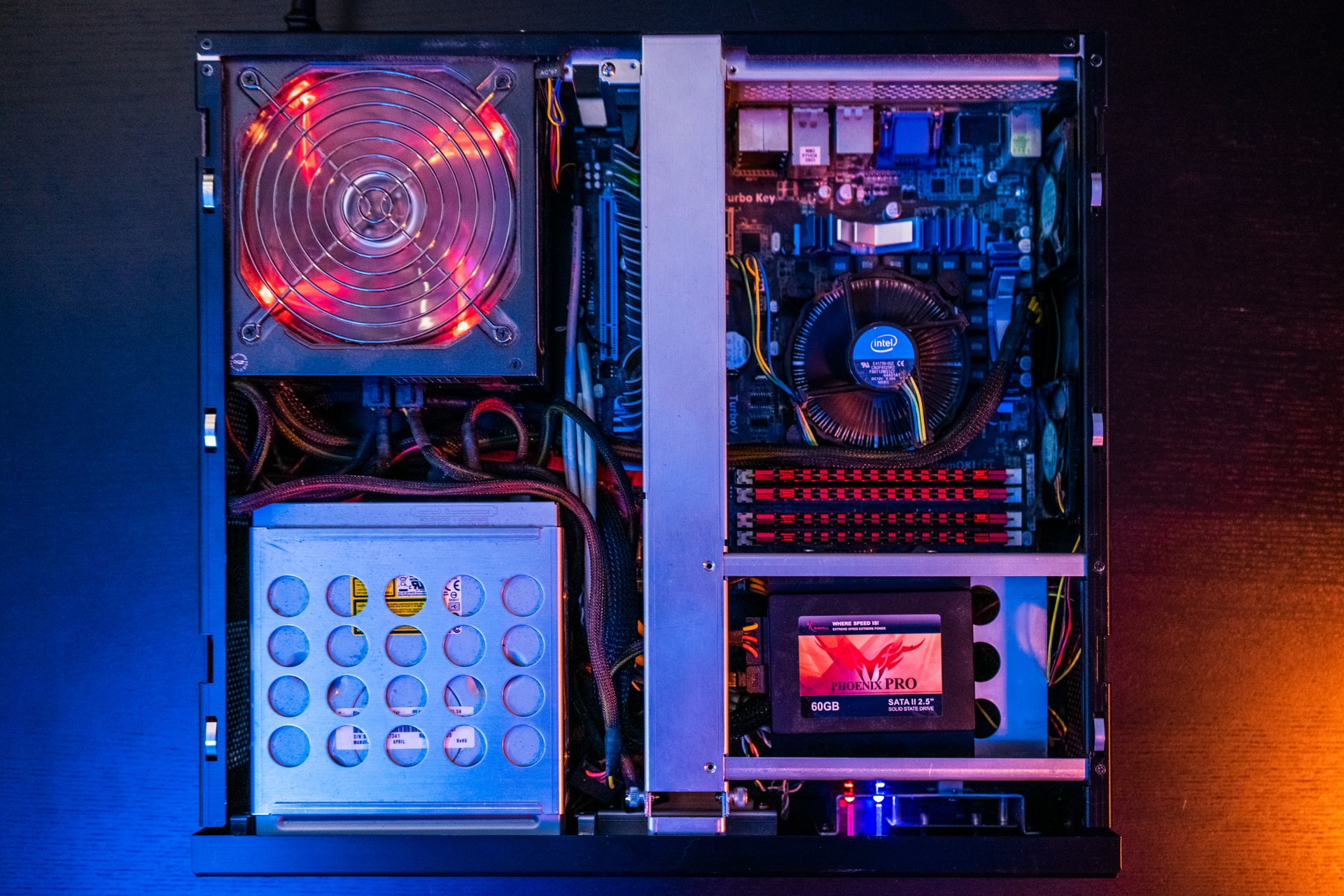
An SSD is a new generation of computer storage devices. SSDs rely on flash-based memory, which is substantially faster than a standard mechanical hard disk drive. As a result, your computer will run faster if you install a SSD.
Data mainly stored on mechanical hard drives for decades. Traditional hard disk drives (HDDs) are generally made up of moving elements, such as a read/write head that moves back and forth to collect data. As a result, HDDs are the most likely component to fail in a computer.
The new solid-state drives operate in a very different manner. They make use of a NAND flash memory chip, which has no moving parts and provides near-instant access.
Early SSD experiments began in the 1950s, and by the 1970s and 1980s, they were being used in high-end supercomputers. Despite this, the technology was costly, and the storage capacity was limited (between 2MB and 20MBs) compared to the ludicrous 5-digit pricing. As a result, consumer devices wouldn't adopt SSD technology until the 1990s.
SSD prices began to fall in the early 1990s as a result of technological advances. SSDs had a 10-year life expectancy, but their size was still an issue. SSDs wouldn't become more reliable until the late 2000s
Memory chips on SSDs are similar to those found in random access memory (RAM) (RAM). However, a grid of NAND flash cells is used to store files instead of a magnetic disk. Each grid (also known as a block) may contain anything from 256 KB to 4MB of information. So, for example, when your PC requests a file from SSD controller, the file is (almost) instantly available. There's no need to wait for a read/write head to locate the data it needs. As a result, SSD access times are measured in nanoseconds.
Uses of solid-state drive
Solid-state drives (SSDs) were first adopted in high-performance technical fields and enthusiast PCs, where their high-speed access times and high throughput justified the higher cost. However, they have become a standard option — or even the default choice — in typical laptops and PCs that are less expensive and more widely available.
Some unique advantages of SSDs include:
Business Sectors: Access times and file transfer rates are crucial for businesses dealing with large volumes of information (such as programming environments or data analysis).
Gaming Industry: Gaming computers have always pushed the boundaries of current computing technology, necessitating the purchase of costly hardware for the sake of gaming performance. This is especially true in terms of storage because modern blockbuster games are continually loading and writing files (e.g., textures, maps, levels, characters)
Network Servers: To fully serve their client PCs, enterprise servers require SSDs that provide rapid reads and writes to function.
What types of SSDs are there?
When shopping for a SSD, you'll come across words like mSATA and PCIe. So, what does it all mean? Here's a crash course in what you need to know.
To connect an SSD to your PC, you must use a particular interface. The following are examples of standard interfaces:
PCIe and NVMe SSDs:
PCI Express (PCIe) is a high-performance bus commonly used to link graphics cards, network cards, and other high-performance peripherals. This interface provides high bandwidth and low latency, making it excellent for communicating between the SSD and your CPU/RAM. Solid-state drives that use this connection are built on the NVMe standard, which offers higher input-output per second (IOPS) and lower latency than SATA. In addition, as a result of several parallel channels, NVMe may deliver raw throughput of up to 16 GBits per second.
mSATA III, SATA III, and conventional SSDs:
With speeds of up to 6 GBit/s or 600 MB per second, Serial Advanced Technology Attachment (SATA) is an older interface developed primarily for storage. NVME, which is much quicker than SATA, is slowly replacing SATA. However, SATA-based SSD upgrades are still beneficial for older PCs and notebooks with a hard disk drive.


It is possible to buy consumer-grade SSDs with storage capacities as high as 5TB. However, enterprise-grade storage has a much bigger capacity, which comes at a higher price.)
Data mainly stored on mechanical hard drives for decades. Traditional hard disk drives (HDDs) are generally made up of moving elements, such as a read/write head that moves back and forth to collect data. As a result, HDDs are the most likely component to fail in a computer.
The new solid-state drives operate in a very different manner. They make use of a NAND flash memory chip, which has no moving parts and provides near-instant access.
Early SSD experiments began in the 1950s, and by the 1970s and 1980s, they were being used in high-end supercomputers. Despite this, the technology was costly, and the storage capacity was limited (between 2MB and 20MBs) compared to the ludicrous 5-digit pricing. As a result, consumer devices wouldn't adopt SSD technology until the 1990s.
SSD prices began to fall in the early 1990s as a result of technological advances. SSDs had a 10-year life expectancy, but their size was still an issue. SSDs wouldn't become more reliable until the late 2000s
Memory chips on SSDs are similar to those found in random access memory (RAM) (RAM). However, a grid of NAND flash cells is used to store files instead of a magnetic disk. Each grid (also known as a block) may contain anything from 256 KB to 4MB of information. So, for example, when your PC requests a file from SSD controller, the file is (almost) instantly available. There's no need to wait for a read/write head to locate the data it needs. As a result, SSD access times are measured in nanoseconds.
Uses of solid-state drive
Solid-state drives (SSDs) were first adopted in high-performance technical fields and enthusiast PCs, where their high-speed access times and high throughput justified the higher cost. However, they have become a standard option — or even the default choice — in typical laptops and PCs that are less expensive and more widely available.
Some unique advantages of SSDs include:
Business Sectors: Access times and file transfer rates are crucial for businesses dealing with large volumes of information (such as programming environments or data analysis).
Gaming Industry: Gaming computers have always pushed the boundaries of current computing technology, necessitating the purchase of costly hardware for the sake of gaming performance. This is especially true in terms of storage because modern blockbuster games are continually loading and writing files (e.g., textures, maps, levels, characters)
Network Servers: To fully serve their client PCs, enterprise servers require SSDs that provide rapid reads and writes to function.
What types of SSDs are there?
When shopping for a SSD, you'll come across words like mSATA and PCIe. So, what does it all mean? Here's a crash course in what you need to know.
To connect an SSD to your PC, you must use a particular interface. The following are examples of standard interfaces:
PCIe and NVMe SSDs:
PCI Express (PCIe) is a high-performance bus commonly used to link graphics cards, network cards, and other high-performance peripherals. This interface provides high bandwidth and low latency, making it excellent for communicating between the SSD and your CPU/RAM. Solid-state drives that use this connection are built on the NVMe standard, which offers higher input-output per second (IOPS) and lower latency than SATA. In addition, as a result of several parallel channels, NVMe may deliver raw throughput of up to 16 GBits per second.
mSATA III, SATA III, and conventional SSDs:
With speeds of up to 6 GBit/s or 600 MB per second, Serial Advanced Technology Attachment (SATA) is an older interface developed primarily for storage. NVME, which is much quicker than SATA, is slowly replacing SATA. However, SATA-based SSD upgrades are still beneficial for older PCs and notebooks with a hard disk drive.


It is possible to buy consumer-grade SSDs with storage capacities as high as 5TB. However, enterprise-grade storage has a much bigger capacity, which comes at a higher price.)



There is no any comment yet! Be the first!